You are here
Press Resources: Whitebark Pine Seeds Story 6/10
Press Release: Whitebark Pine Seeds at Risk, Harvard Study Shows
Contact Clarisse Hart, Harvard Forest Outreach Manager, at 978-756-6157 or hart3@fas.harvard.edu.
Journal of Ecology paper: “Sex allocation, pollen limitation and masting in whitebark pine"
Photos
(click for high-res)
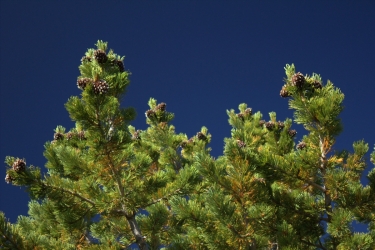 Large seed cones are displayed prominently at the top of a whitebark pine. Photo by Josh Rapp.
Large seed cones are displayed prominently at the top of a whitebark pine. Photo by Josh Rapp.
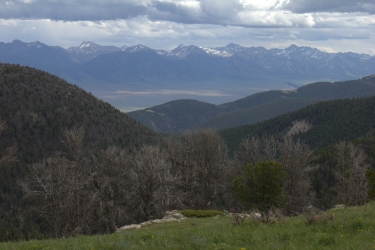 Whitebark pine trees killed by the mountain pine beetle (in the foreground and on the mountains). Surviving trees, like the one in the foreground, are likely to experience challenges in producing viable seed cones. Photo by Josh Rapp.
Whitebark pine trees killed by the mountain pine beetle (in the foreground and on the mountains). Surviving trees, like the one in the foreground, are likely to experience challenges in producing viable seed cones. Photo by Josh Rapp.
 Ecologist Josh Rapp climbs a whitebark pine to sample cone-bearing branches. Photo by Dash Donnelly.
Ecologist Josh Rapp climbs a whitebark pine to sample cone-bearing branches. Photo by Dash Donnelly.
The Clark's Nutcracker is the main carrier of whitebark pine seeds to new areas. Each bird creates underground caches holding up to 100,000 whitebark pine seeds every year. Photo by Clarisse Hart.
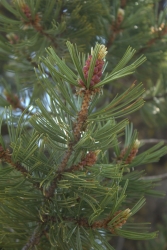 Pollen cones are found on small spur branches in the middle and lower sections of the whitebark pine. Photo by Josh Rapp.
Pollen cones are found on small spur branches in the middle and lower sections of the whitebark pine. Photo by Josh Rapp.
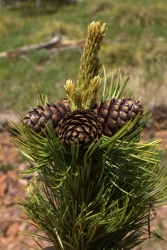 Seed cones can be found in clusters of 2-4 cones at the ends of stout branches at the top of whitebark pine canopies. Photo by Josh Rapp.
Seed cones can be found in clusters of 2-4 cones at the ends of stout branches at the top of whitebark pine canopies. Photo by Josh Rapp.
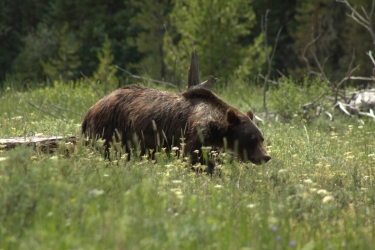 Grizzly bear foraging in Yellowstone National Park. Grizzlies are more likely to come into conflict with humans when whitebark pine cone crops fail. Photo by Josh Rapp.
Grizzly bear foraging in Yellowstone National Park. Grizzlies are more likely to come into conflict with humans when whitebark pine cone crops fail. Photo by Josh Rapp.

